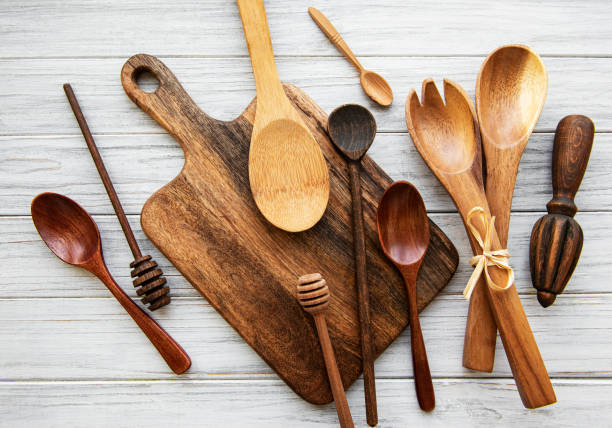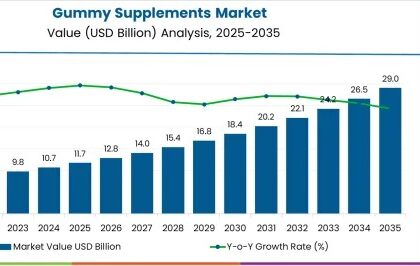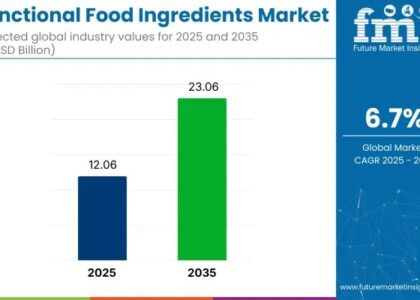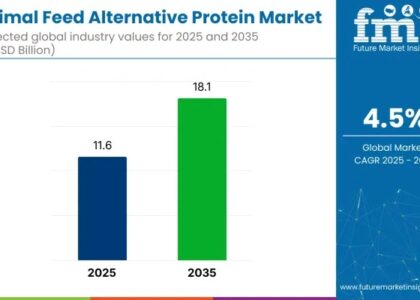Rising consumer inclination towards embracing natural and eco-friendly lifestyles is propelling the trajectory of the wooden cutlery market, forecasted to reach a valuation of approximately US$ 308.8 million by 2033, marking a steady compound annual growth rate (CAGR) of 4.8% from 2023. This upward trend reflects a burgeoning demand for sustainable alternatives, as individuals increasingly prioritize environmentally-conscious choices in their purchasing decisions. The anticipated expansion of the market underscores a significant shift in consumer preferences, emphasizing the enduring appeal of wooden cutlery as a viable and eco-conscious option in the global culinary landscape over the next decade.
The surge in demand for sustainable and eco-friendly products significantly propels the expansion of the wooden cutlery market. Consumers are actively pursuing alternatives that offer greater sustainability and minimize harm to the planet, fueled by a heightened awareness of the detrimental effects of single-use plastics on the environment.
Request Sample: https://www.futuremarketinsights.com/reports/sample/rep-gb-7605
One of the primary factors contributing to the growth of the wooden cutlery market is the rise in food service industry, including restaurants, cafes, and catering services, which can be attributed to its sustainable and aesthetic appeal, which enhances the overall dining experience. Food service establishments are embracing wooden cutlery as it aligns with their sustainability initiatives and meets the expectations of environmentally conscious customers.
There is a global trend towards embracing natural and organic products in different aspects of life, including dining. Wooden cutlery fits well with this trend by offering a natural and chemical-free alternative to conventional cutlery materials. Consumers are increasingly drawn to wooden cutlery due to its organic and sustainable attributes, thus fueling market growth.
Business Growth Drivers:
- Environmental Awareness: Growing concerns about plastic pollution and the desire for eco-friendly alternatives have propelled the demand for wooden cutlery. Consumers are increasingly choosing sustainable options to reduce their environmental footprint.
- Preference for Natural Materials: Wooden cutlery offers a natural and rustic appeal, which resonates with consumers seeking products that align with a more organic lifestyle. This preference for natural materials has boosted the market for wooden utensils.
- Shift Towards Sustainable Practices: Businesses, particularly in the food and hospitality sector, are adopting sustainable practices to meet consumer expectations and comply with regulations. Switching to wooden cutlery presents an opportunity for businesses to demonstrate their commitment to sustainability.
- Biodegradability and Compostability: Wooden cutlery is biodegradable and compostable, making it an attractive option for individuals and businesses looking to reduce waste and minimize environmental impact. Its disposal is relatively eco-friendly compared to plastic alternatives.
- Versatility and Aesthetic Appeal: Wooden cutlery is versatile and suitable for various occasions, from casual gatherings to upscale events. Its aesthetic appeal adds value to table settings and enhances the dining experience, driving demand in both consumer and commercial markets.
Industry Trends:
- Cost Constraints: Wooden cutlery, although eco-friendly, tends to be more expensive than plastic alternatives. This cost differential can be a significant barrier for budget-conscious consumers and businesses, impacting the widespread adoption of wooden utensils.
- Limited Durability: Wooden cutlery may have limited durability compared to plastic or metal alternatives, particularly in high-temperature or moist environments. This could lead to a shorter lifespan and potentially higher replacement costs, deterring some consumers and businesses from investing in wooden utensils.
- Supply Chain Challenges: Sourcing sustainable wood for cutlery production can pose challenges related to supply chain transparency, ethical sourcing, and certification requirements. Ensuring a consistent and reliable supply of high-quality wood may present obstacles for manufacturers and distributors in the wooden cutlery market.
- Competitive Pressure: The wooden cutlery market faces competition from alternative eco-friendly materials, such as bamboo or compostable plastics. These alternatives may offer similar environmental benefits at a lower cost or with enhanced durability, intensifying competition within the market.
- Regulatory Compliance: Compliance with regulations and standards related to food safety, product labeling, and environmental claims can be complex and costly for businesses operating in the wooden cutlery market. Meeting regulatory requirements adds an additional layer of challenge for manufacturers and suppliers in this industry.
Key Takeaways from the Market Study
- Global wooden cutlery market was valued at US$ 184.4 million by 2022-end.
- From 2018 to 2022, the market demand expanded at a CAGR of 2.2%.
- The United States is expected to hold a dominant CAGR of 4.7% during the forecast period.
- By product, the spoons segment is expected to constitute a CAGR of 4.7% in 2033.
- On the basis of end-use, the food service outlets segment is expected to dominate the market with a CAGR of 5.0% in 2033.
- From 2023 to 2033, wooden cutlery market is expected to flourish at a CAGR of 4.8%.
- By 2033, the market value of wooden cutlery is expected to reach US$ 308.8 million.
“Government regulations and initiatives, across the globe is a major factor that is expected to propel the growth of the wooden cutlery market in the near future,” remarks an FMI analyst.
Request Report Methodology: https://www.futuremarketinsights.com/request-report-methodology/rep-gb-7605
Competitive Landscape
Prominent players in the wooden cutlery market are
- Huhtamaki Group Oyj,
- Eco-gecko Products Inc.,
- Dinearth Eco-Friendly Tableware,
- Greenwood (Dalian) Industrial Co., Ltd.,
- Bambu LLC,
- Vegware Ltd.,
- Biotrem,
- Bio Futura B.V.,
- Ecoware Biodegradables Inc.,
- Ecoriti,
- Vrag Fils Airlaid Pvt. Ltd.,
- Natural Tableware,
- Packnwood (First Pack),
- Pavrex Wooden Products
- Pappco Greenware,
- among others.
Recent Developments
- In 2022, Packnwood developed a new line of disposable wooden cutlery with enhanced strength and stability. The cutlery featured improved designs and construction to withstand various food textures and preparation methods, ensuring a reliable dining experience.
- In 2021, Eco-gecko Products Inc. launched a range of compostable wooden cutlery sets for catering and events. The sets included forks, knives, and spoons made from sustainably sourced wood and were designed to enhance the dining experience while minimizing environmental impact.
- In 2021, Bambu LLC launched a line of reusable wooden cutlery sets, aiming to promote sustainability and reduce single-use plastic waste. The cutlery sets were made from durable bamboo and came in convenient travel pouches, encouraging eco-friendly practices on the go.
Regional Analysis-
In the United States, the demand for wooden cutlery is on the rise, with an anticipated 92% share of total sales in North America by 2023. This surge is largely attributed to the increasing number of Quick Service Restaurants (QSRs) and fast-food service providers. The continuous growth of this sector is creating lucrative opportunities for the wooden cutlery market. Additionally, the United States is actively promoting a shift towards a circular economy, as endorsed by the Biodegradable Products Institute. This initiative, advocating for the production and use of fully biodegradable and compostable products, is expected to further accelerate the demand for eco-friendly tableware and packaging solutions, contributing to a projected CAGR of 4.7% over the analysis period.
Meanwhile, in Germany, the wooden cutlery market is set to experience substantial growth with a noteworthy CAGR of 2.6%. Germany, holding a significant 18% market share in the European wooden cutlery market in 2023, benefits from being Europe’s largest food producer. The robust food and beverage industry in Germany, representing the fourth largest sector, is a key driver fueling the demand for wooden cutlery in the country. The expanding industry creates lucrative opportunities for the adoption of wooden cutlery as a sustainable and eco-friendly choice in the German market.
Buy Now/Purchase: https://www.futuremarketinsights.com/checkout/7605
Key Segmentations:
By Product:
- Spoon
- Fork
- Knife
By End User:
- Food Service Outlets
- Hotels
- Restaurants & Cafes
- QSR
- Institutional
- Cinemas
- Catering
- School & Offices
- Hospitals
- Household Use
By Sales Channel:
- Direct Sales
- Distributors
- Retailers
- Hypermarkets
- Supermarkets
- Convenience Stores
- Specialty Store
- Discount Stores
- E-retail
By Region:
- North America
- Latin America
- Western Europe
- Eastern Europe
- South Asia and Pacific
- East Asia
- Middle East and Africa
About Future Market Insights (FMI)
Future Market Insights, Inc. (ESOMAR certified, recipient of the Stevie Award, and a member of the Greater New York Chamber of Commerce) offers profound insights into the driving factors that are boosting demand in the market. FMI stands as the leading global provider of market intelligence, advisory services, consulting, and events for the Packaging, Food and Beverage, Consumer, Technology, Healthcare, Industrial, and Chemicals markets. With a vast team of over 5000 analysts worldwide, FMI provides global, regional, and local expertise on diverse domains and industry trends across more than 110 countries.
Contact Us:
Future Market Insights Inc.
Christiana Corporate, 200 Continental Drive,
Suite 401, Newark, Delaware – 19713, USA
T: +1-845-579-5705
For Sales Enquiries: sales@futuremarketinsights.com
Website: https://www.futuremarketinsights.com
LinkedIn| Twitter| Blogs | YouTube






